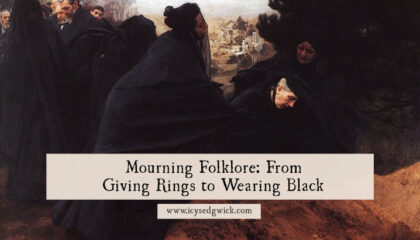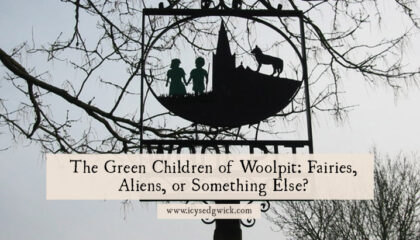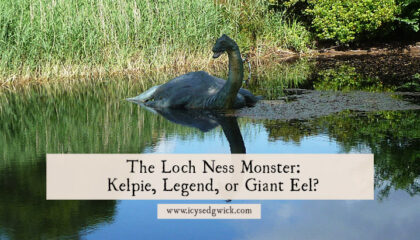Following on from 2024’s theme of the Folklore of Animals, this month we’ll examine the Folklore of Agricultural Animals. This week, we’ll explore the folklore, legends, and even folk medicine associated with sheep. Sheep are not native to the UK. Neolithic settlers brought them to Britain from southwest Asia in around 3000 BCE. Sheepskin and […]
Mourning Folklore: From Giving Rings to Wearing Black
If you think of the phrase “to be in mourning”, you’ll probably imagine a Victorian scene. Perhaps a black-clad widow ushers similarly black-clad children to a desolate graveyard in the depths of autumn. Or maybe you picture a grand house, shuttered up against the world that continues outside, while life is paused for those inside […]
The Green Children of Woolpit: Fairies, Aliens, or Something Else?
According to legend, two green children wandered into a village in 12th-century Suffolk. No one knew who they were or where they came from. Their refusal to eat and unfamiliar language made locals wary. Over time, they gradually assimilated, and told a fantastic story of their origins. Were they fairies? Lost children with big imaginations? […]
The Folklore of Dowsing, aka Water Witching
Dowsing is a fascinating form of divination since it is often used to find water, minerals, or even lost items. While other forms of divination like tarot or botanomancy seek to provide information, here the information is often of a tangible sort. Rather than telling a fortune, or providing a prophetic dream that must be […]
The Geordie Dialect: Its History and Some Basic Phrases
There can be a tendency to view folklore as antiquated customs, old legends, or outdated practices. Yet folklore is not disconnected from contemporary life, and is an ever-evolving part of our lived experience. Folk music and folk art are two obvious branches, yet dialect and language is another. Louise Pound refers to dialect as “linguistic […]
The Loch Ness Monster: Kelpie, Legend, or Giant Eel?
The Loch Ness Monster is perhaps one of the world’s most enduring mysteries. Does a giant reptile really lurk in a Scottish loch? Has it somehow survived for millennia on its own? Or is it something darker and more dangerous? It is, after all, a monster. Its legend dates to the 7th century, although recorded […]











